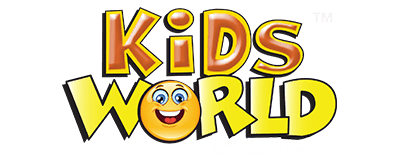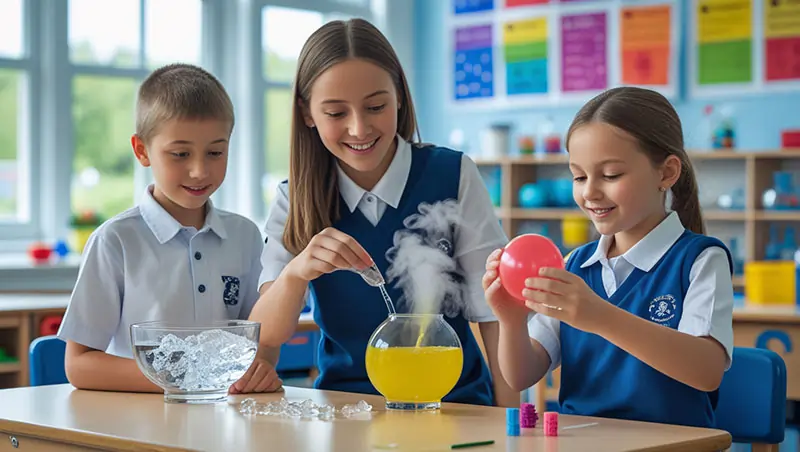States of Matter Explained with Fun Experiments for Kids
1. What are the States of Matter?
Matter makes up everything around us, including the chair you sit on and the water you drink. Anything that has mass and takes up space is matter. Scientists have discovered that matter can exist in various states, referred to as phases.
There are three main states of matter:
- Solid, like a rock, ice, or your desk.
- Liquid, like water, milk, or juice.
- Gas, like air, steam, or helium in balloons.
Plasma (like in the Sun) and Bose-Einstein condensate are two more states you might hear about as you get older. But for now, let’s just talk about solid, liquid, and gas for kids who are learning science for the first time.
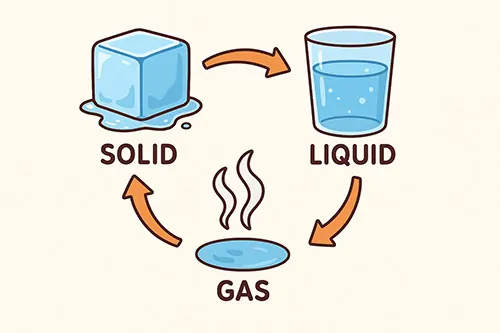
2. Properties of Solids, Liquids, and Gases
Each state of matter has its own unique properties that set it apart from the others.
| State | Shape | Volume | Particle Arrangement | Example |
| Solid | Fixed | Fixed | Packed tightly, don’t move much | Ice, wood, metal |
| Liquid | Takes the shape of container | Fixed | Loosely packed, slide past each other | Water, juice, oil |
| Gas | No fixed shape | No fixed volume | Far apart, move freely | Air, steam, helium |
💡 Fun tip for kids:
Think of solids as kids standing still in a line, liquids as kids holding hands and moving around, and gases as kids running around a big playground.
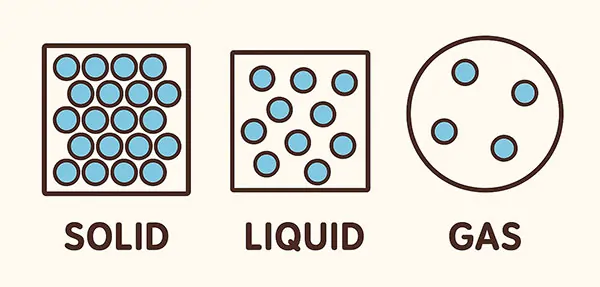
3. How Matter Changes State
You can change the state of matter by changing the pressure or temperature. Changes like these are called changes of state.
| Change | From | To | What happens |
| Melting | Solid | Liquid | Ice turns to water when heated |
| Freezing | Liquid | Solid | Water turns to ice when cooled |
| Evaporation | Liquid | Gas | Water turns to steam when boiled |
| Condensation | Gas | Liquid | Steam turns to water when cooled |
| Sublimation | Solid | Gas | Dry ice turns directly into carbon dioxide gas |

4. Easy Home Experiments
Here are some safe and fun experiments that will help kids learn about the states of matter.
Try it out 1: Ice melting
Goal: Find out how heat turns a solid into a liquid.
Things you need: You will need ice cubes, a bowl, and a timer.
Steps:
- Put ice cubes in the bowl.
- Watch them melt as time goes on.
- Write down how long it takes.
What you learn: When ice (solid) gets hot, it melts and turns into water (liquid).
Experiment 2: Balloon filled with gas
Goal: Watch gas fill up space.
Things you need: a balloon, an empty bottle, baking soda, vinegar, a spoon, and a funnel.
- Put vinegar in the bottle.
- Put the baking soda in the balloon with a funnel.
- Put the balloon on top of the bottle without spilling any baking soda.
- Raise the balloon so that the baking soda falls into the vinegar.
- See the balloon get bigger.
What you learn: A chemical reaction lets out carbon dioxide gas, which takes up space and makes the balloon bigger.
Test 3: Water Evaporation
Goal: See a liquid turn into a gas.
Things you need: A small cup of water and a sunny window sill.
- Put a cup of water next to the window.
- Check again in a day or two.
- Watch the water level drop.
What you learn: The water evaporates into the air.
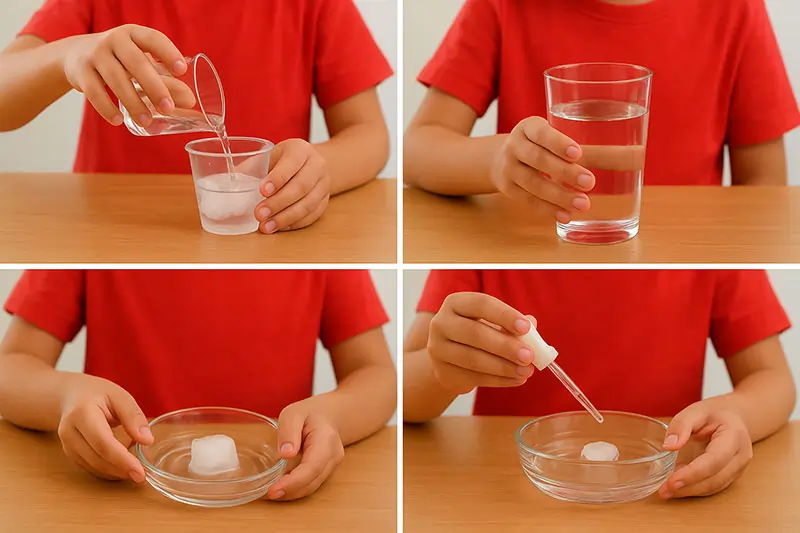
Related reading: How Rain is Formed?
5. Printable Diagrams and Worksheets
Here are some ideas for printable learning materials for teachers and parents:
- Coloring sheets—kids color solids, liquids, and gases.
- Cut-and-paste charts: Put things in the right state of matter.
- Change of state wheel: A wheel that spins and shows how things change from one state to another.
- Label the diagram: Write the names of the parts on the diagram. It’s a drawing of how particles are arranged.
- A fun quiz sheet with multiple-choice questions about the different states of matter.
A sample printable worksheet showing a table with everyday objects and a space for kids to tick whether it’s solid, liquid, or gas. (state of matter worksheet.png)
6. Fun Science Facts
- You can’t see steam! The “white cloud” you see is not gas; it is made up of water droplets.
- You are breathing in a mix of gases, with oxygen and nitrogen being the most common.
- Plasma, a very hot state of matter, makes up the Sun.
- Dry ice is solid carbon dioxide. It doesn’t melt into a liquid; it goes straight to gas.
- About 60% of your body is made up of water!
7. Review Questions
- What are the three main states of matter?
- Is the shape of a solid always the same?
- How does water turn into ice?
- Give an example of sublimation.
- What state of matter is oxygen in?
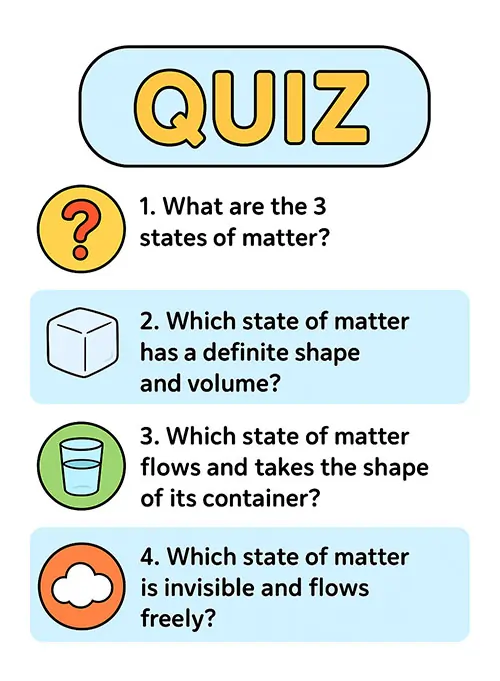
8. FAQs
Q1: Is it possible for matter to be both solid and liquid at the same time?
Yes! Some things, like slushy ice, have both solid ice crystals and water that is still liquid.
Q2: Is plasma harmful?
Plasma can be dangerous if not handled in the right way because it is very hot, like lightning or the Sun.
Q3: Are you able to see gases?
Most gases are clear, but some, like smoke, have tiny particles that make them easy to see.
9. Summary
There are three states of matter: solid, liquid, and gas.
- Solids have a certain volume and shape.
- Liquids have a set volume but take the shape of their container.
- Gases don’t have a set shape or volume.
Melting, freezing, evaporating, condensing, and sublimating are all ways that matter can change state.
Kids can easily learn about solid, liquid, and gas through fun experiments and worksheets that they can print out.
